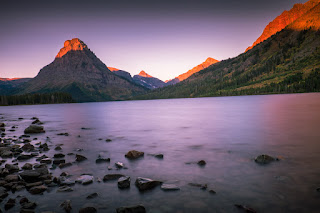Aperture
1. What part of the body should we closely relate aperture?The pupil is closely related to aperture because it controls how much light we receive.
2. Finish this sentence - the smaller the Aperture _____________, the higher the Aperture ________________.
The smaller the aperture, the less light is let in, the higher the aperture, the more light is let in.
3. In your own words tell me how aperture impacts Depth of Field?
With a small aperture, the entire image is sharp and a deep sense of depth is created. With a large aperture comes a large amount of background blur.

PHOTO TAKEN AT F.28 APERTURE

PHOTO TAKEN AT F16 APERTURE
--------------------------------------------------------------------------------------------------------
Shutter Speed
1. If you were assigned to shoot at Bulldogs and Hotdogs night, which was a few weeks ago, what shutter speeds do you think you would have to shoot at the following events that night I would like you to answer the question for the following two situations: Shooting near the start of the day when everything is well lit. a.) a booth in the middle of the yard near the Tree
I would shoot with a low shutter speed so the leaves on the tree could come out a little blurry.
b.) a food booth outside under one of the big red awnings I would shoot with high shutter speed because there would be people surrounding the booth.
c.) the Stars performance inside the gym A high shutter speed would be suitable because the performers are in motion.
d.) students dancing near the center of the courtyard I would need to shoot with a high shutter speed to capture the movements clearly.
e.) people streaming in from the front doors Use a high shutter speed to caption motion crisply.
f.) the basketball booth where students are shooting basketballs at a hoop A high shutter speed is necessary in this scenario so the ball does not appear blurry.
[shooting] Towards the end [of the event] when there is no sun and has gotten dark enough that you can't see from one end of the courtyard to the other
a.) a booth in the middle of the yard near the Tree
Shoot with the lowest shutter speed to let in as much light as possible. Use a tripod.
b.) a food booth outside under one of the big red awnings
Shoot with a low shutter speed to let in as much light as possible (this would be in the shade, so using a low shutter speed is vital).
c.) the Stars performance inside the gym
The gym is well lit and indoors so the amount of light present in the photo will not be affected. Also, the people are moving.
d.) students dancing near the center of the courtyard
d.) students dancing near the center of the courtyard
Shoot with a high shutter speed and with the flash on.
e.) people streaming in from the front doors
Use a high shutter speed.
f.) the basketball booth where students are shooting basketballs at a hoop
Using a low shutter speed would make for an interesting image. Shoot with a tripod.Name 3 settings your camera has, regarding shutter speed exposure: the amount of light in a picture
depth: the amount of dimension in a picture
noise: sharpness/blur in a picture
PHOTO TAKEN WITH A HIGH SHUTTER SPEED

PHOTO WITH A LOW SHUTTER SPEED

ISO
1. What are the advantages of shoot at a higher ISO at a sporting event like basketball or a night football game?
Use the lowest ISO whenever possible. Use a tripod or have your camera still.
3. What suggestions did the author make about using a high ISO? Use a high ISO to avoid motion blur. Only increase the ISO when there is not enough light for the camera to capture a sharp, bright image.
photo taken at ISO 200

ISO 3200

Camera Simulator
SETTINGS
Shutter speed: 1/8
Aperture: 22.0
ISO setting: 800
SETTINGS
Shutter speed: 1/60
Aperture: 8.0
ISO setting: 1600
SETTINGS
Shutter speed: 1/4000
Aperture: 4.0
ISO setting: 25600
(I like the grain effect)



Comments
Post a Comment